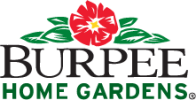Frequently Asked Questions
The following is a list of some frequently asked questions and our answers:
This depends on which crop you are growing. For some, like root crops, just leave enough space to walk through for watering. For sprawling veggies like cucumbers, consider leaving at least two feet between rows.
The best time to plant perennials depends on the species, but we sell established plants that may be planted from spring to fall. Feel free to drop by the greenhouse and ask one of our friendly staff in person.
Since the weather doesn’t work on a set schedule, you’ll need to use your best judgment. Sticking a finger into the ground will give you a good sense as to how dry the soil is; if it feels dry, then it’s time to water.
Trimming back the tops of your perennials can make them look nicer, but leaving them on can help to protect the crowns from freezing in the winter. For this reason, it’s better for the plant to wait until late winter or early spring.
Soil from the ground tends to be inconsistent, and often contains too much clay for your potted plants to thrive properly. Instead, use potting soil. And, if your container holds more soil than your plants need, you can fill the bottom with crumpled leaves from your gutters or other organic garden debris. This will decompose over time, enriching the soil.
As long as you keep your soil enriched by fertilizing and adding compost, you should be able to re-use the soil year after year.
Pathways should be at least 3 feet wide. This not only keeps your garden easy to navigate, but gives you a little extra room for over-growth.
It depends on the breed: While many flowers prefer the sun, there are a number of flowers that thrive in the shade, such as Hostas, Bleeding Hearts, Comfrey, Painted Ferns, and Periwinkle.
Keeping a sharp edge to your garden can keep your lawn from trying to reclaim your garden. Make sure you keep your trench about 8″ deep. If you want to cut down on edge maintenance, you can also sink an edging material around to prevent unwanted cross-over.
It’s always a good idea to start with a few larger containers—this will give you less watering and more room for multiple plantings. Mix slow release fertilizer in the top 1cm of soil and plant veggies like tomatoes and peppers (look for determinate plants). Most foliage and flowering plants do very well in planters; you are only limited by your imagination!
Rake your lawn to get rid of dead growth, stray leaves, twigs, and winter debris to let light and air to the soil level, encouraging the grass to grow. Re-seed bare or damaged patches of lawn, scratching up the soil with a rake first, before mixing a shovel of soil with a couple scoops of grass seed, spreading it in the patch you’re fixing. Rake level and keep well-watered until seeds germinate and the new grass establishes.
Do you have a gardening question that isn’t covered by our FAQ? Just ask, and Victor or Lidia will be happy to answer! Contact us.
Copyright © 2025 Debono Greenhouses & Garden Centre. All Rights Reserved.
Website by Picasso Fish



